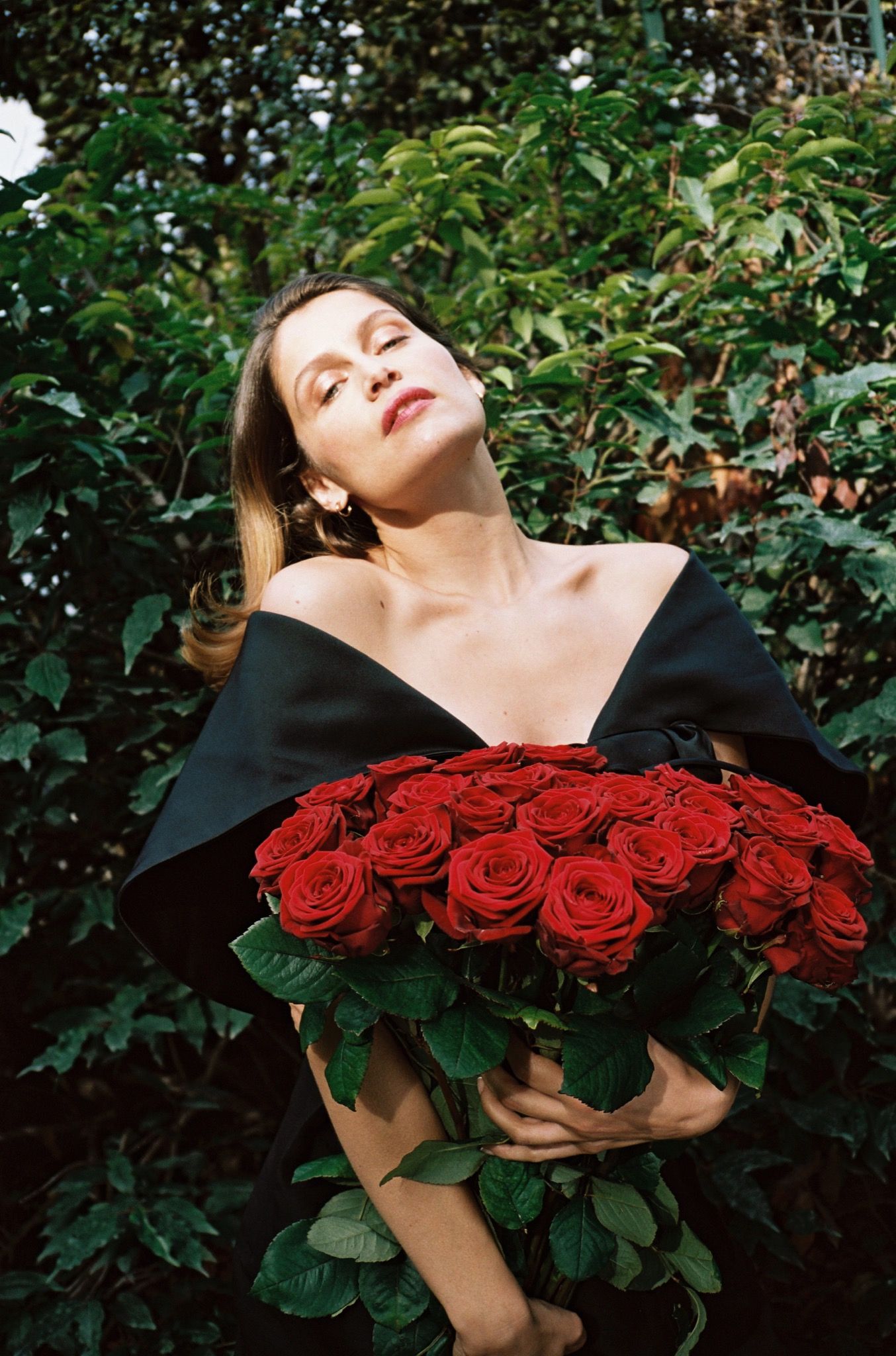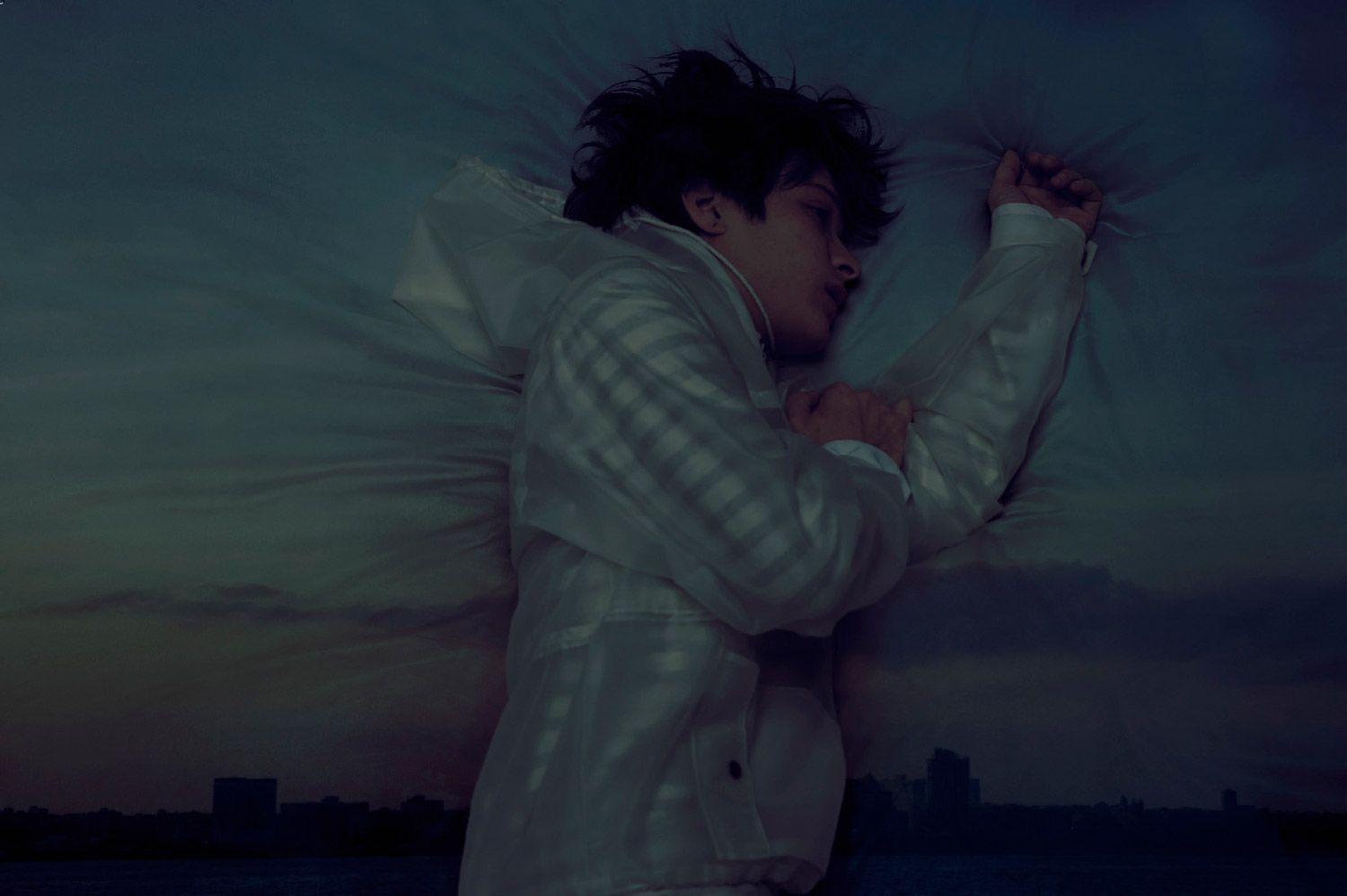Not a Revolution, But an Evolution: LUCAS OSSENDRIJVER’s Lanvin Homme
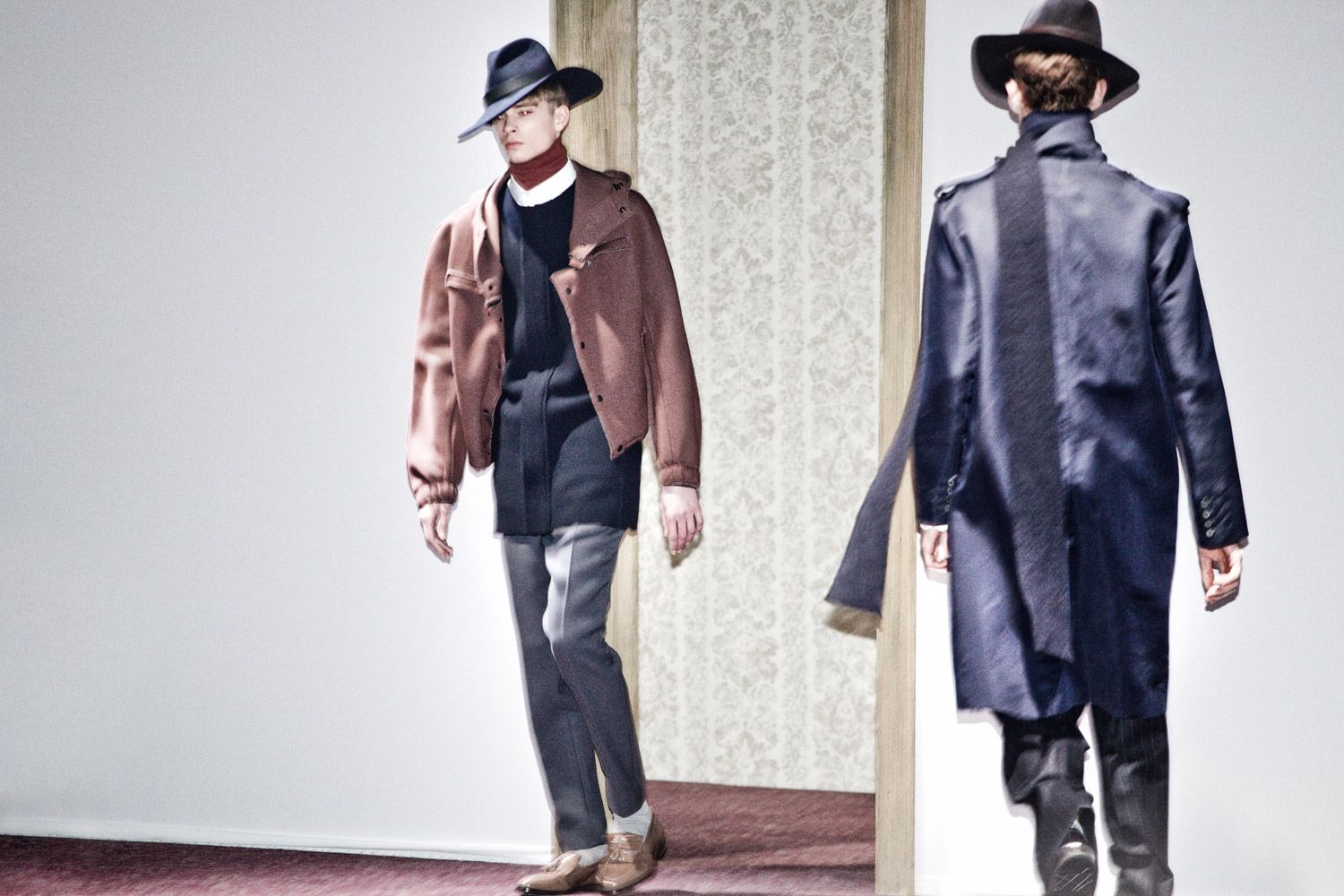
“I am not looking for world domination or the biggest salary. The freedom I have is what’s most important.” It may seem like a strange thing for a high-fashion designer to say about his profession, but LUCAS OSSENDRIJVER says it with sincerity. The Dutchman at the helm of LANVIN HOMME just happens to be one of the most influential men’s wear designers working today.
Model number four wears a dust-grey turtleneck under a white shirt; a striped silk tie accented with blue wool patches; a short, dark grey suit jacket with A-line trousers in another fabric; a dark blue wool coat; a glimpse of a foxtail; grey socks and crocodile slippers. Madame Wong moves her head from right to left and bottom to top every time one of the young men passes by. She seems comfortable in her ale-bench seat, in the first of three rows. The floor is covered with a rich fitted carpet. More slippers walk by, down jackets tailored like suit jackets, voluminous pleated-front trou- sers, hiking boots, knee-length coats with belts that look like a rope wrapped around the waist, and, the Lanvin Homme top seller, unlined jackets – a Lucas Ossendrijver invention.
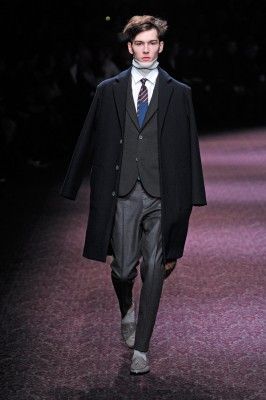
It’s been six years now that Ossendrijver has been at the helm of Lanvin Homme – a department he created. Before him there was only a made-to-measure department for suits and shirts, and of course, cravats and bow ties. The young designer’s appearance at Lanvin Homme brought performance into high fashion. He takes sportswear techniques and textiles and applies them to tailored men’s wear; conversely, he transfers traditional men’s wear fabrics and technical standards into casual apparel. “Sportswear with a certain dressiness,” as Ossendrijver calls it, “a certain elegance that is a very French way of dressing – that’s what I’m after.” His approach is based on research and method. Like an industrial designer, he cares about a continual balance of form and function. Everything has to make sense; everything has to be logical.
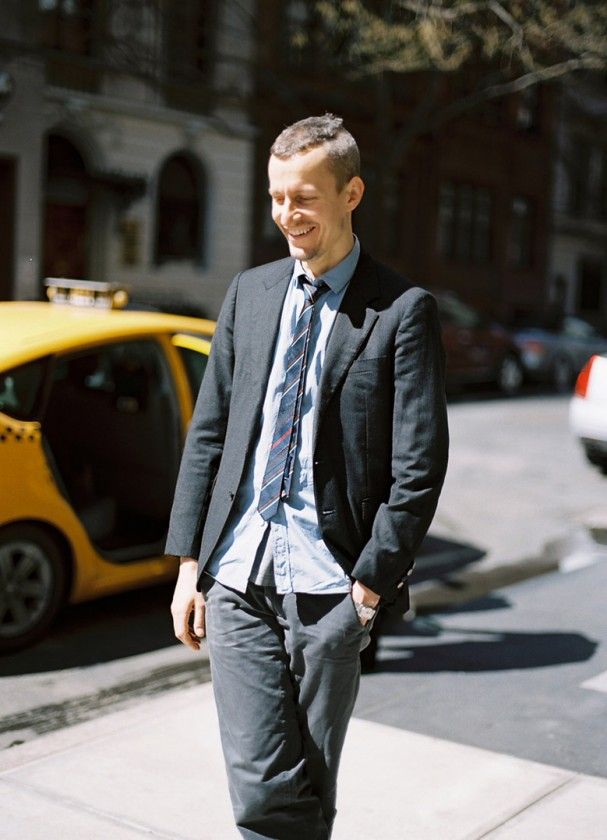
“Ossendrijver” is not the easiest name to drop, but he prefers to be called Lucas by everyone anyway. The designer, now 41, is elegant, sporty, tall and slim. His hairstyle – shaved on the sides and perfectly trimmed to a length of three centimeters on top – hasn’t changed in ages. Today, he is wearing Lanvin from head to toe and says it’s a rare occasion: a blue checked shirt from Summer 2010, blue jeans from about four seasons ago, and hiking boots from the upcoming Winter collection – “On one side you can have crocodile leather, which is extreme luxury,” Ossendrijver says of his shoes, “and on the other side you have a calf leather with an elastic band wrapped around it. That’s what Lanvin is all about.” His only accessory is a manly, stainless steel watch. He smiles when he speaks, with his eyes. Two months have passed since he presented his Autumn/Winter collection, and there are three to go until he presents Spring/Summer. He shows no signs of being nervous or particularly stressed. Ossendrijver is in his office. “Coffee?” “Yes, please.” “Coming up.”
His office is impressive in its modesty. Located above the Lanvin Homme boutique on Paris’ famous Rue Faubourg Saint-Honoré, the entrance is far from fancy, like the back door of a hotel used only by maintenance staff. There’s no gratuitous glitz. An elevator takes you up to the fourth floor where the designer’s office is no larger than nine square meters: three meters long, three meters wide, low-ceilinged, and containing one desk, two chairs, and two windows. There’s a computer on the desk, a landline phone and, here and there, piles of papers and books. Behind his chair there is a little shelf, not organized, not disorganized. There’s a small mood board between the windows with seven or eight cutouts, each of them immediately eye-catching, not because they are loud and colorful, but because they are special – like the photograph of a couple of older gentlemen dressed like preppy college boys and playing drums. The mood board is not necessarily related to the season he is working on, it’s just to have a good view since his office windows face a wall. It’s eleven a.m. Like every day, the designer has been in the office since ten, and will leave around seven in the evening, eight at the latest. On most days, he walks home. He never works at home, and he never works late at night. He likes rhythm and structure, and needs his colleagues around him to produce. The atelier and his four-person design team are right next-door to his office, but there are no actual doors. Open space, open dialogue.
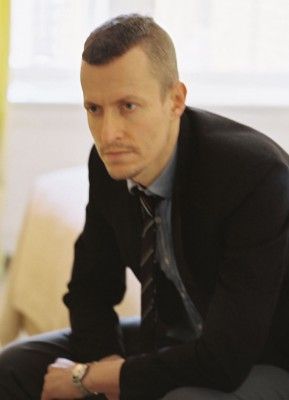
The beginning
Lucas, the youngest of three children, was born in January 1970 in the small Dutch city of Amersfoort. His father had a construction company, which he was supposed to take over one day – but luckily, his sister was more into it. His older brother is a scientist and professor who lives in New York and works at an institute where he decodes ancient mathematics, Persian algebra, and – “uhh” – the designer isn’t really sure what it is exactly that his brother does. But, he has a lot of respect for him, and even tried to read his doctoral dissertation; it was all just formulas and hieroglyphs to him, though.
“Men’s fashion is not a revolution, but an evolution.”
Ossendrijver says he had a happy childhood, spending most of his time on his father’s construction sites or building cabins in the trees. Although he wasn’t in contact with fashion – neither his mother nor anyone else he knew dressed up – he started to dream about it. It was an abstract idea – an idea that, after high school graduation, took him to Arnhem to study art and fashion. His parents worried for their son, who they assumed would be doomed to live off pasta from then on, but they nevertheless encouraged him.
In Arnhem he learned that fashion is a profession – a normal, daytime job. His classmates were Pascale Gatzen, now a professor at Parsons in New York, and Viktor Horsting and Rolf Snoeren. During their time in college, the four created a collective called Le Cri Néerlandais. In his second year, he began to focus on “construction” – to this day a keyword in any explanation of Ossendrijver’s approach to design. Le Cri Néerlandais created a few collections, and a certain amount of buzz around Holland – but Holland is small. To the young visionary, it felt like living on an island. He wanted to try his luck elsewhere, and after his thesis show in Arnhem – a men’s collection – took off for Paris.
On to the mainland
Ossendrijver landed in Paris at Faycal Amor’s label Plein Sud. But designing stretch dresses wasn’t really his thing, so he left after six months. He spent the next three years in Kenzo’s men’s wear department, absorbing everything a designer needs to know about fabrics, prices and production. Ossendrijver rarely sounds “sensual” when he speaks about fashion, but then again, men’s wear is not always about being sensual. It’s his pragmatism, reflected in his designs, that makes men want to wear his clothes. Hedi Slimane – who was transforming the way men dress around this time – sensed that, and hired the young designer for his second season at Dior Homme. Working in a corporate structure, however, where every- one has their task but is never really involved in everything, didn’t make the freedom-loving Ossendrijver happy. “I like being involved from the beginning to the end,” he says. “I want to know every stitch – that’s how I function.” Knowing he belonged somewhere else, he left Dior Homme in 2004.
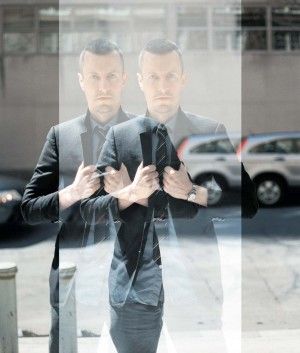
It was now early 2005, and Lucas Ossendrijver was 35 years old. He greatly admired Alber Elbaz, responsible for the women’s department at Lanvin, and decided to write him a letter. Two sentences: Dear Monsieur Elbaz, I ad- mire your work. Would you spare five minutes of your time to take a look at my portfolio? Sometime later, Elbaz’ secretary called. A meeting was arranged with Alber Elbaz and Madame Wong – Lanvin’s discrete, Taipeh-based owner, who only comes to Paris for the shows. (She can be spotted by her Mireille Mathieu hairdo, with white ends and black roots.) The meeting took place in Jeanne Lanvin’s one-time office, on the other side of Rue Faubourg Saint- Honoré, above the Lanvin Femme boutique. This is where the label was founded in 1889, and since Lanvin’s death in 1946, everything – the books, the lamps – has remained untouched. Madame Wong flipped through Ossendrijver’ portfolio and asked him some questions in French. Alber Elbaz didn’t look at the portfolio, but asked some questions too, in English. Both spoke at the same time. Three months later, he was part of the family.
“Alber is my mentor. I know he is always there, without actually being present in my studio. He leaves me the freedom to do what I believe is right. We are in a constant exchange. We use each other’s ideas. Men and women go together. It’s not two different worlds; It’s one world.”
Model number twenty-one wears a black turtleneck with a white shirt under a grey zippered cardigan; a double-breasted suit jacket in red satin with eggplant-colored pants and matching gloves; a big red hat, red briefcase, bluish-black hiking boots. Once again, for Winter 2011, Ossendrijver has combined the values of Lanvin – elegance, class, tailoring – with the sportswear approach he’s become known for. His atelier is like a laboratory to him, and he’s been pushing the limits hard since he arrived at the house, twelve collections ago. Unlike other high-fashion brands, at Lanvin there is one collection per season, and unlike other brands, everything you see on the runway will hit the stores, thirteen of which are directly owned boutiques, in addition to about 330 more retail outlets worldwide. Lanvin does not release any figures, but the clothes certainly sell well. Ossendrijver’s influence is evident on the street: whether the wearer is actually in one of his designs or in a high-street knockoff, the casual, elegant Lanvin Homme silhouette is recognizable on men everywhere. It’s an alternative to the skinny look started by Slimane – which you still see around – and to the more eccentric Rick Owens-derived school of male dressing. Sophisticated, grown-up, sometimes preppy, always sporty chic. It’s a look that works on young men as well as it does on Baby Boomers. Still, when talking about his practice he sometimes sounds more like an academic than like a successful fashion designer. He doesn’t mention drawings or sketches. Instead, he speaks about experiments and research – about finding the right product, solutions, and mode of communication. Ossendrijver has found his very own language, and it’s a hit.
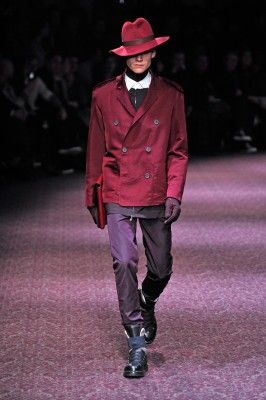
For this Fall/Winter, the flavor was 1960s mountaineering, and his approach is in and of itself itinerant. It begins with three to four days of solo research, during which Ossendrijver wanders around, goes to libraries, sees exhibitions – nothing unusual. After that he meets up with his team to share his thoughts and to brief them. Two more weeks of research follow, this time for everyone on the team. They can choose where to go for inspiration – Ossendrijver wants them to shape the collection as well. It’s not about one person, he says, but a team effort. After this period of mind-wandering and research, one week is devoted to finding solutions to realize the concept. Communication is a critical part of the process.
“I always start with a feeling, with an intuition – and for that nowadays I don’t have to travel anymore. I can find anything on the Internet. I find it more inspiring to think about it than to actually go there. Then I take that idea and work it and bring it to another place so that all the references disappear. When you are at the show, you feel something but you don’t have the elements in your face. You only want a flavor to stay. It’s not about the theme; it’s about the clothes.”
Once the idea is clear, Ossendrijver begins commuting between France and Italy – he does not have a proper manufacturing atelier, like Alber Elbaz has for women’s wear, and all the patterns and technical aspects of his designs are carried out there. He likes this rhythm, just as he likes being in his office because it is small and a bit messy. Not too corporate, not too big, not too clean – and that’s good.
Model number thirty-five wears a turtleneck, a shirt, a bowtie, a blue suit, gloves and chunky hiking boots. The Lanvin man looks good because of what is implied, not because of what is stated out loud. Madame Wong can’t sit still. She is excited; she always is when she sees what her boys have achieved, again. The last look has disappeared backstage. Madame Wong jumps up from the bench, clapping, and follows the other greeters backstage to congratulate Alber Elbaz, and of course, Lucas Ossendrijver.
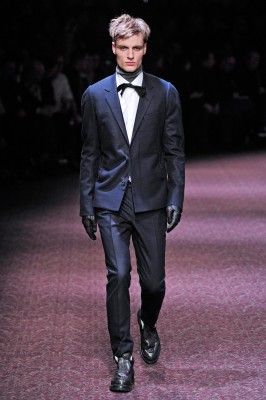
LANVIN HOMME 2006–2011 – A brief chronology
In just eleven collections, Lucas Ossendrijver – working alongside creative director Alber Elbaz – has defined a strong profile for Lanvin men’s wear based on a few constant hallmarks. These include an embrace of technology; a use of sumptuous fabrics; a propensity to experiment with volume, ambiguity and opposition; an athletic extravagance and romanticism; and a touch of camp.
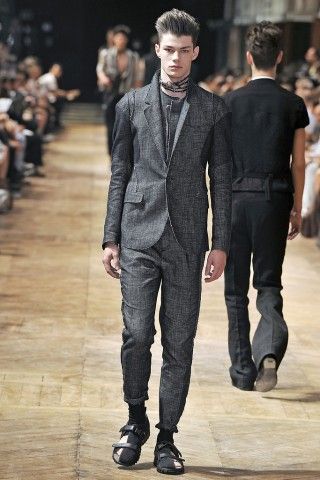
Actionwear-inspired looks and "ugly" sandals (see 032c #20) reflect a trekking theme, continuing to push the label from the romanticism of past seasons towards a brawnier masculine. Ossendrijver deploys the ideas of speed, mobility and performance to shift the emphasis onto texture. A still-lean silhouette underscores the collection’s athleticism.
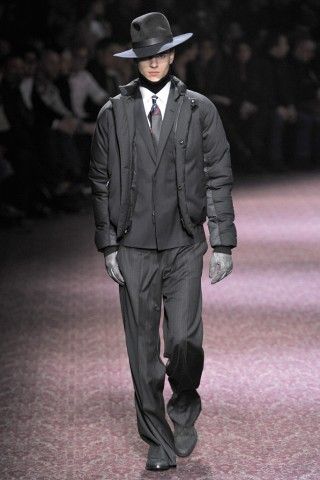
Ossendrijver debuts the speed-the-med, predominantly linear collection described in this feature.
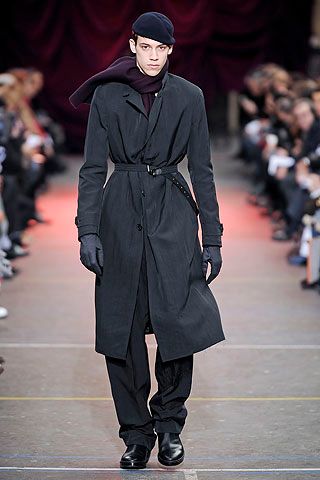
With its pleated pants, silk shirts, neck scarves and cinched-waist coats, this standout collection is deemed an appropriately somber response to the recent financial crisis. While the season hails a return to a certain masculinity for the label, romantic elements such as neck scarves and blousy shirts are in keeping with Lanvin’s signature vocabulary of contrast. Laser-cut jersey translates a theme of “tailoring and jogging.“
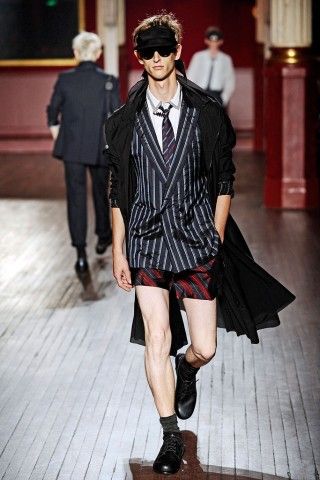
Strikingly body-conscious, this season’s looks reveal more skin than usual. Opposition deployed in new, vaguely 80s-inspired shapes make for a playful departure from the label’s previous approach to spring.
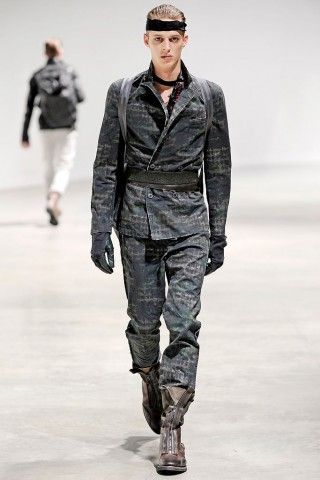
The label’s penchant for ambiguity is manifest this season in cloud prints that look like camouflage. Critics interpret the military references as a signal of the label’s increasing tendency towards the masculine, also evinced in dark wools and raw-edged seams. A new, more rugged Lanvin man is born.
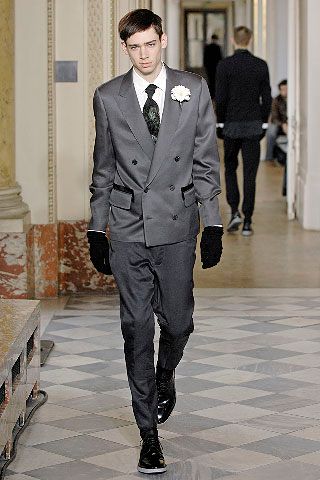
In a total reversal of his previous season, Ossendrijver shows a more structured look. He also premieres a new form: jackets with removed linings that introduce a new lightness into men’s outerwear. The airiness balances the new emphasis on architecture and creates friction.
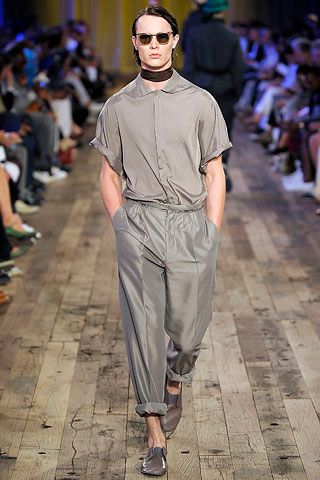
Elbaz and Ossendrijver receive a standing ovation for an advanced rendition of the brand’s now-established signatures: precise detailing – in elastic waistbands, cuffs and carefully placed tucks – allow for a controlled manipulation of volume and movement, further underscoring the dichotomy between structure and softness in the fabrics at hand. The label’s brightly colored sneakers and boat shoes will be considered collectibles within a few short years.
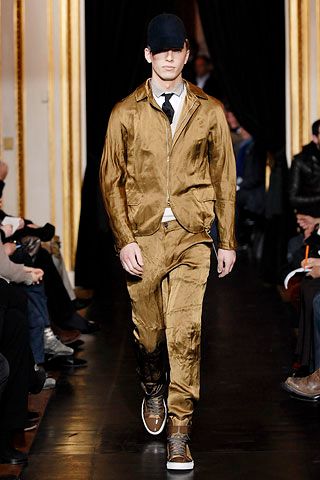
A tracksuit in gold duchesse satin epitomizes the label‘s increasingly defined mission to meld a casual, sportswear aesthetic with overtly luxurious elements. Lightly wrinkled fabrics are given a discreet sheen. With its narrow silhouettes, this is the most sexually ambiguous collection to date. Satin sneakers create a major buzz around the label, foreshadowing the importance that footwear would hold in coming seasons. The label becomes a favorite among editors and in online fashion forums.
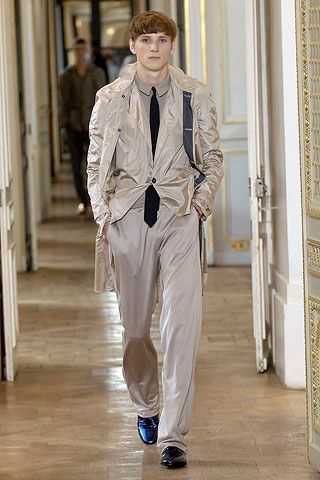
Ossendrijver introduces the pajama-like, loose silhouette that becomes one of the season’s strongest trends, copied by labels high and low. Silk dominates the collection.
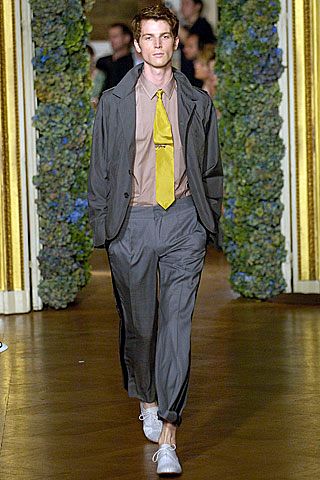
This season establishes the fundamental set of contradictions that will distinguish Lanvin Homme under Ossendrijver: shiny vs. matte, fitted vs. loose, and natural vs. synthetic. The result is a rather relaxed collection from the still young label.
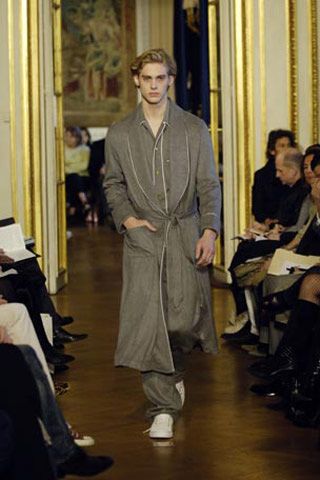
The first Lanvin Homme collection is presented at the Hôtel de Crillon, Paris. Critics detect a “floppiness and lived-in feel” in Ossendrijver’s work, akin to that of Alber Elbaz’ celebrated women’s designs. Fabrics used include velvet and satin, early indicators of the label’s commitment to the use of rich textiles.
By JINA KHAYYER, Portraits HEJI SHIN
